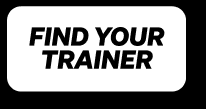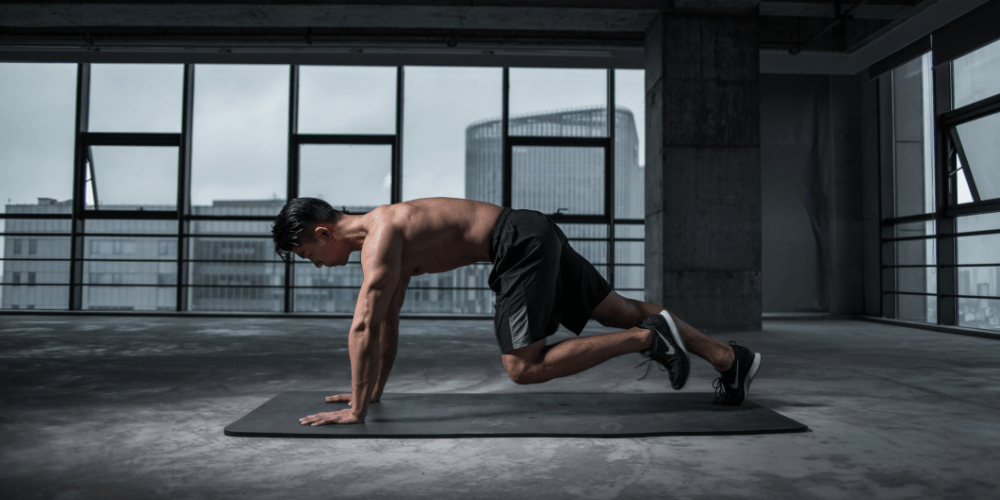
Everything you wanted to know about HIIT workouts
- Chiara
- July 13, 2021
- 7:40 am
One of the most common reasons I often hear that hinder peoples’ commitment to exercise is the statements like “I don’t have time” , “ work is too busy” etc.. Basically time is the biggest constraint to being active and leading a healthy lifestyle. Well, what if I tell you that you can improve your fitness, lose weight and challenge yourself in a less than 30 mins a day of a workout? Those workouts are what you may heard called HIIT.
What is HIIT and how can you get the best out of it?
HIIT stands for “high intensity interval training” and it consists of a 15-30 minutes workouts that involve short bursts of intense work (20 seconds to few minutes) followed by a period of rest that prepares you for the next high intensity working rounds. HIIT when done right carries a variety of benefits in a short period of time. Why do I mean done right? When we talk about HIIT there needs to be an exertion of 80-100% effort during the work time. This could be measured by heart rate or after a while you can start going by feel. If you have a heart rate monitor such a fitness watch, this should measure about 80-100% of your max heart rate, calculated 220-age x 80-100%. So for example if you are 35 years old, your goal would be to reach about 170 bpm (beats per minute) during your work time interval. Remember you will have a good rest, to recharge and go again.
HIIT is normally no more than 8-15 rounds taking about 15- 30 minutes. Infact a type of HIIT called tabata is only 4 minutes alternating between 20 seconds of work and 10 seconds of rest for 8 rounds. The nice thing about HIIT is that you can use different movements to create a workout, its quite simple. Additionally, you can do a great HIIT workout at the gym as well as at home.
HIIT targets what we call the anaerobic threshold in comparison to what we call LISS (low intensity steady state) which targets the aerobic system. LISS is when we are working for a long time at 65% of our maximal effort or heart rate. Both use sugars in our blood as a source of energy but LISS needs oxygen to utilize sugar and carry it to the muscles. This usually starts after 2 minutes from starting a workout and remains slow throughout the workout. HIIT in the meantime is intensive enough to skip the step of using oxygen for energy production and taps directly into stored glycogen ( in other words stored sugars) to satisfy the muscle needs and therefore uses more energy in a shorter time period.
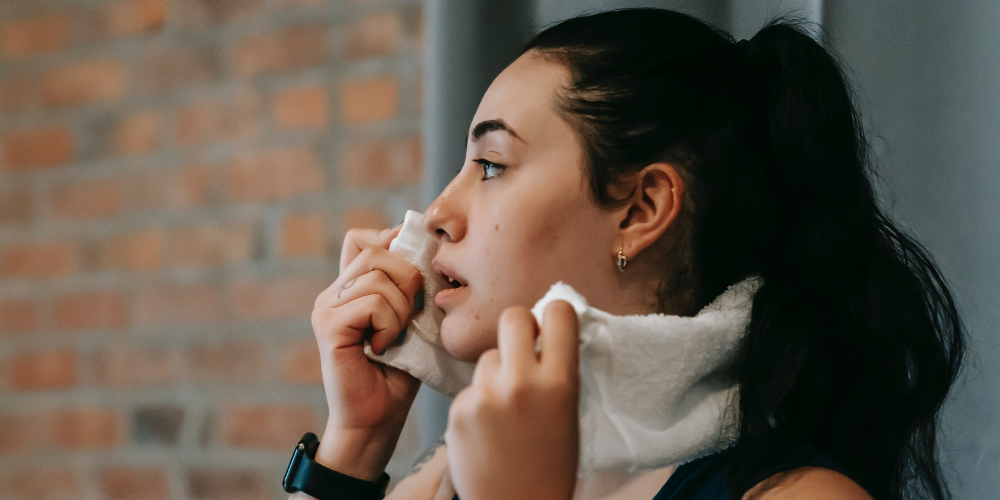
Benefits of HIIT:
- Cardiovascular: Improves blood flow and even helps people with chronic diseases. In fact, one study shows that 55 minutes of HIIT during the week is as beneficial as 128 minutes of moderate intensity exercise to improve heart health by reducing resting heart rate and improving blood pressure
- Mental health: HIIT has been shown to enhance the mood and raise the endorphins just like regular moderate exercising. It has also be shown in studies to reduce depression and improve focus.
- Weight loss: HIIT as stated above, is able to use energy more effectively and in a shorter time.
Building muscle: Unlike steady state cardio or LISS, HIIT not only burns calories but the intensity requires the recruitment of muscles and therefore strengthening and building/ maintaining muscle while losing fat.
Who should do HIIT?
In general everyone is eligible for doing HIIT. Anyone looking to lose weight, get fit, build muscle in shorter sessions per week, can incorporate HIIT in their workout routine. Those are some points to consider when starting:
- HIIT is measured by the effort you put in and how much the heart rate elevates. The effort will depend on whether you are a beginner or advanced. For example, if the HIIT workout requires you to do 1 minute of skipping followed by 1 minute of rest for 10 rounds at maximum capacity, a beginner might be doing 50 skips per minute of work and an advanced may be doing 100 skips. Both are using maximum effort to complete the skips and will be reliant on their capacities.
- In HIIT, no matter how advanced you are, you can make HIIT workouts harder and more challenging by pushing more as you get fitter and better. It will never get easier if you’re doing it right.
- HIIT can incorporate any exercise move from bodyweight exercises to barbell and dumbbells moves. As a beginner, it’s always recommended to start with bodyweight exercises or light dumbbells to ease your body into training especially if it’s been a long time. The last thing you want is to hurt yourself.
- HIIT should not be done more than 3 times per week as it is indeed taxing on the heart and joints. Also, its important to rest the muscles so they can recuperate and recover. Alternating HIIT with some LISS or bodybuilding/strength training is ideal to train all energy systems, lose weight and get fitter and stronger without compromising your health and incurring unneeded pains and aches.
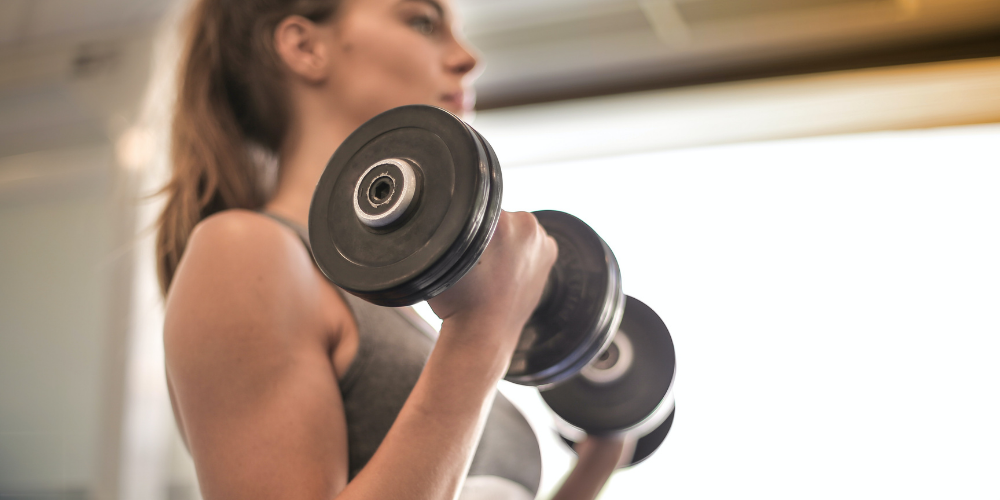
How to get started with HIIT training
There are many ways to start incorporating HIIT in your workout routine. This includes group classes at the gym, home workouts, solo workouts and workouts you can do with a professional personal trainer. When starting as a real beginner, its always recommended to start with someone professional that will help you not only do the right HIIT workouts but also ensure that you are getting the safest and most effective programming.
Below are some examples of HIIT workouts based on convenience and level:
HIIT Home workout
1.Warm up:
5 minutes dynamic stretches and running on the spot
2. Training:
Beginner:
30 seconds on: 1 minutes off alternating moves x 8 ( 4 times each move)
Intermediate:
30 seconds on: 30 seconds off alternating moves x 10 rounds
Advanced:
1 minutes on: 30 seconds off alternating moves x 10 rounds
Home workout:
- Body weight Air squats
- Star jumps
Gym workout
- Alternating Dumbbell snatches
- Calories on rower
Running
- Run maximal speed for each working interval
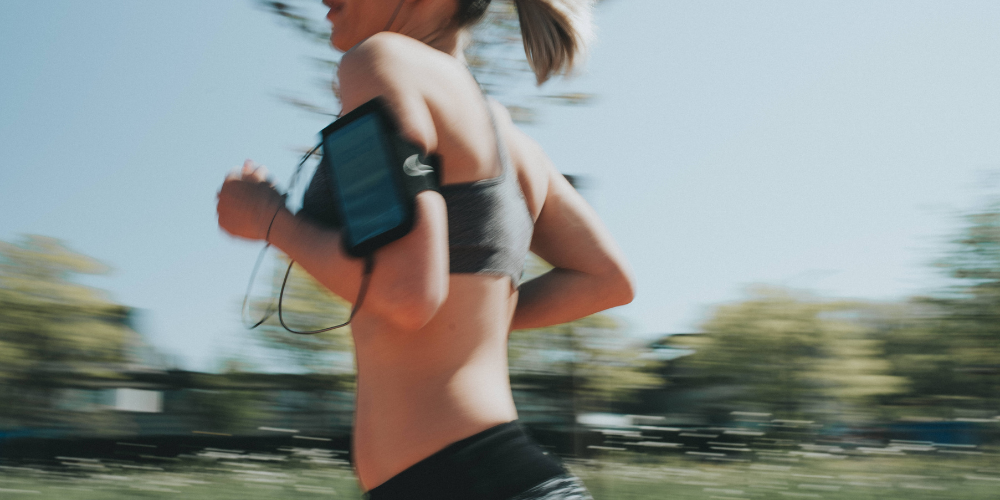
It is important to acknowledge the Pros and Cons of HIIT and steady state cardio/ LISS and that both could be complimentary in a workout program:
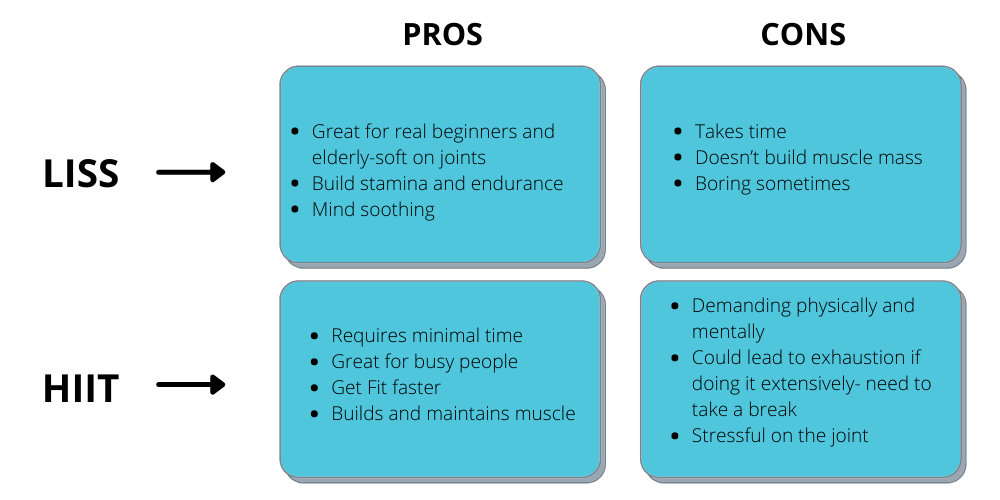
It’s important to mention that whether you are trying to lose weight, build muscle and get stronger, your diet and food are a crucial factor in the process to reach your goals whether you do HIIT, LISS or both. Incorporating an healthy diet is essential and without it you will only get frustrated and give up.
At the end, its up to you to choose what you enjoy and most important what you can stick with. Results take time and require commitment and perseverance. No one ever got results in one week, and no one ever kept the result if they quit.



